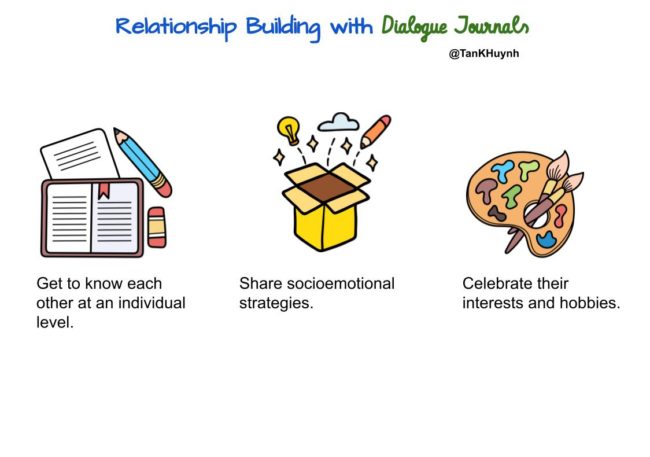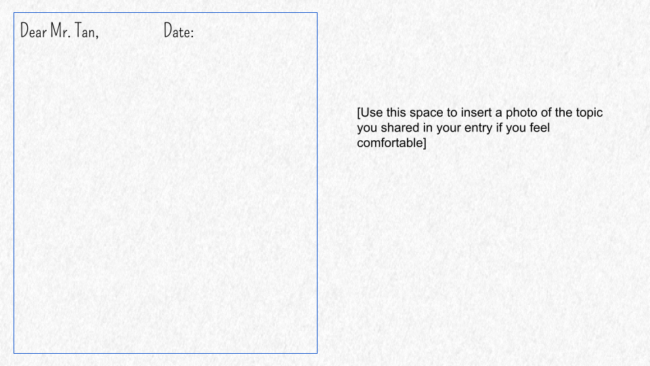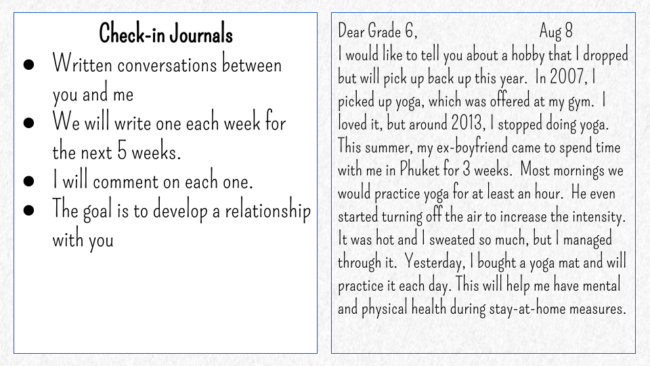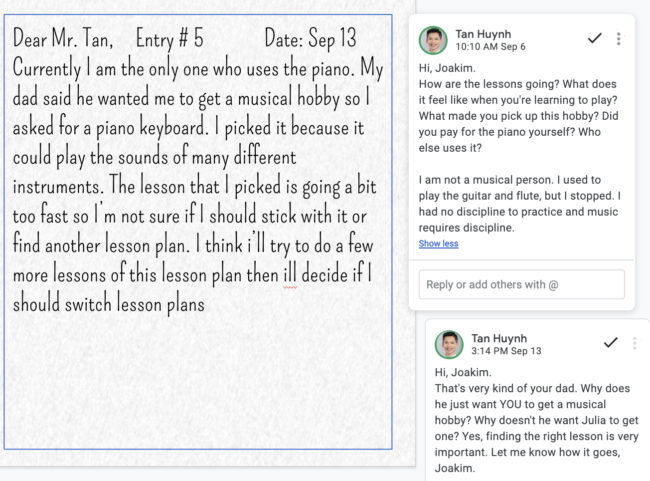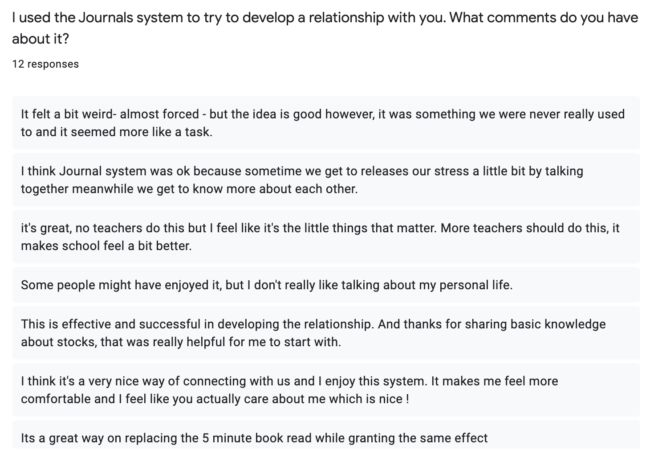We all have one of those classes where we just don’t get along well with students. The culture is not as dynamic and engaged as we wish it was.
I had a grade 10 class full of wonderful people individually, but the structure of the class didn’t facilitate relationship building. They only knew me as a person who assigned work and taught them, and I only knew them as students who completed work.
We could feel that we were all conforming to our roles instead of connecting heart to heart.
In a last, desperate attempt to connect with my 10th graders, I implemented dialogue journals. Once a week, students wrote notes to me, and I responded. As we wrote back and forth for the second half of the year, a more positive dynamic between me and some students did begin to grow.
Strengths-Based Approach
Since a strengths-based approach to teaching multilinguals means understanding what students bring to schools (Snyder & Staehr Fenner, 2021), we can use dialogue journals to invite students to have a conversation with us about their strengths. Through dialogue journals we can learn about students’
- hobbies
- topics of interests
- sources of irritation or annoyance
- subject preferences
- cultural traditions and practices
With this knowledge, we can offer pathways to learning or differentiate instruction around a context of students’ interests. For example, I learned that one of my students really likes video games. For a long-term research project on how a particular invention changed society, I used our journaling to nudge the student to research video games to sustain his engagement and differentiate instruction.
Social-Emotional Learning
If we are only teaching content, then we’re only teaching half the curriculum. We must integrate lessons that develop students’ social awareness, self-management, relationship skills, and responsible decision-making (Jones & Kahn, 2017).
There are endless ways to do this, but one effective and humanizing way is through sharing our own stories. Dialogue journals provide space for us to use our own lived experiences to teach social-emotional competencies.
I started implementing dialogue journals during the pandemic. One student, in particular, was naturally quite anxious about things spinning out of control. I shared with her how I use a strategy called “Naming the Feeling.”
I just wanted her to develop the awareness of her feelings and not get lost in the trance of her runaway thoughts. By naming the emotions that her thoughts produced, she might learn to respond to her needs and become less of a victim of strong emotions.
To teach her this strategy, I shared how I used it when my super superstitious mother triggered strong emotions in me. When my mother had one of her bouts of superstition, I longed to find some way to prevent her from having them. This desire for control made me feel angry and exasperated. Naming these emotions helped remind me that it’s useless to try to control a person. All we can do is listen with compassion.
How to start a Dialogue Journal
1. Create a template for the journal entry.
2. Explain the purpose and intention of journals.
3. Give the journals to students.
4. Provide time for them to respond.
4. Collect the journals.
5. Respond by a certain date.
6. Return the journal to students to repeat the cycle.
If you are starting dialogue journals the first day of school before knowing your students, tell them about yourself and ask them to share something they are looking forward to this school year or something that they are really good at.
To model the process, I shared my first entry and addressed it to the entire class. Students always determine the topic they share, so they are always in control of the content.
Most people think of physical journals when contemplating journaling, but you can also offer digital journals. It’s more convenient to collect and respond to entries when you can access them digitally. Also, during online learning, I was able to continue the journals since I introduced them in this format.
Responding to journals
All of my five classes complete Check-in Journals biweekly. I alternate between the classes so that responding is less overwhelming. Grade 6 writes one during Week A, while Grades 8 and 10 write one on Week B. This means reading 45 journals a week instead of reading all 90 journals. Also, during grading periods when I receive lots of summative assignments, we take a short break from the journals because I need to preserve my sanity.
To make responding more efficient, I simply leave a comment on each student’s Google Slide entry. I always started with, “Hi, [student’s name]. I enjoyed reading your journal!” This made it feel less like I was giving written feedback.
To keep the conversation going, I always ask at least one question about the topic they shared, and they are free to not respond to my questions. My usual question is “I didn’t know that you’re interested in [ ]. Tell me more about that topic,” so that it’s open-ended and never invasive.
Conclusion
At the end of the year, I asked for anonymous responses from my 10th graders regarding their experience with the journals. Not everyone liked it, but many did.
While not every student is going to develop a relationship with us through these journals, for those who do, the opportunity is noticed and appreciated. Our positions as teachers mean that teaching concepts and skills is only one aspect of our role. Developing a relationship is the other crucial element.
Multilinguals need to know that they are valued, they are seen, and someone deeply cares about them. Dialogue journals not only develop students’ language skills but also welcome them into a loving community.
References
Jones, S. M., & Kahn, J. (2017). The evidence base for how we learn: Supporting students’ social, emotional, and academic development. National Commission on Social, Emotional, and Academic Development & The Aspen Institute.
Snyder, S., & Staehr Fenner, D. (2021). Culturally responsive teaching for multilingual learners: Tools for equity. Corwin.

